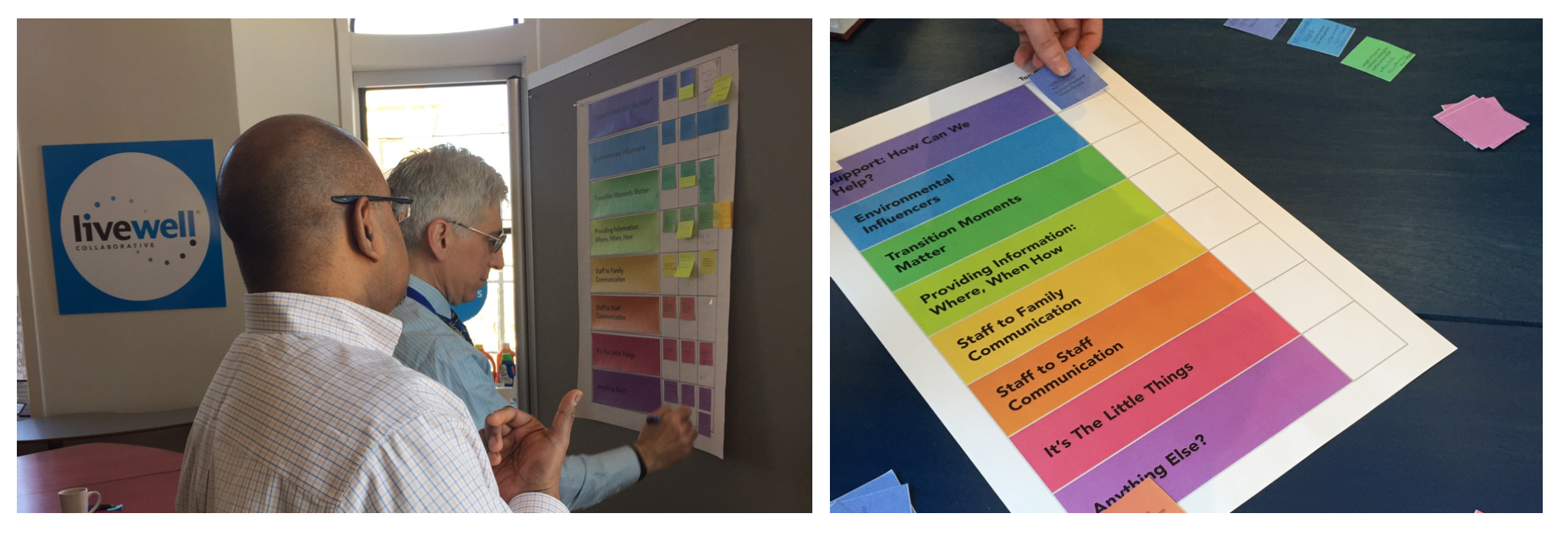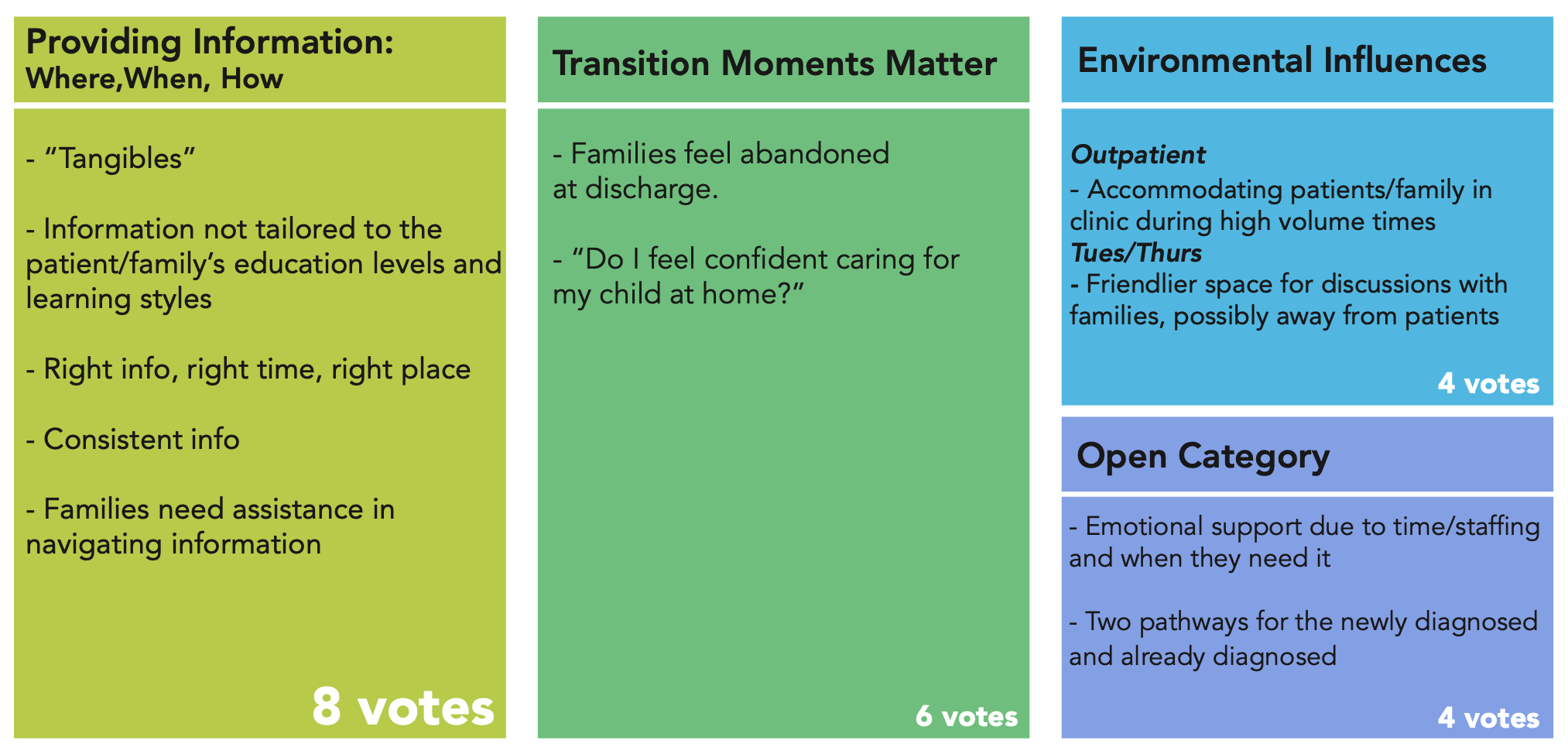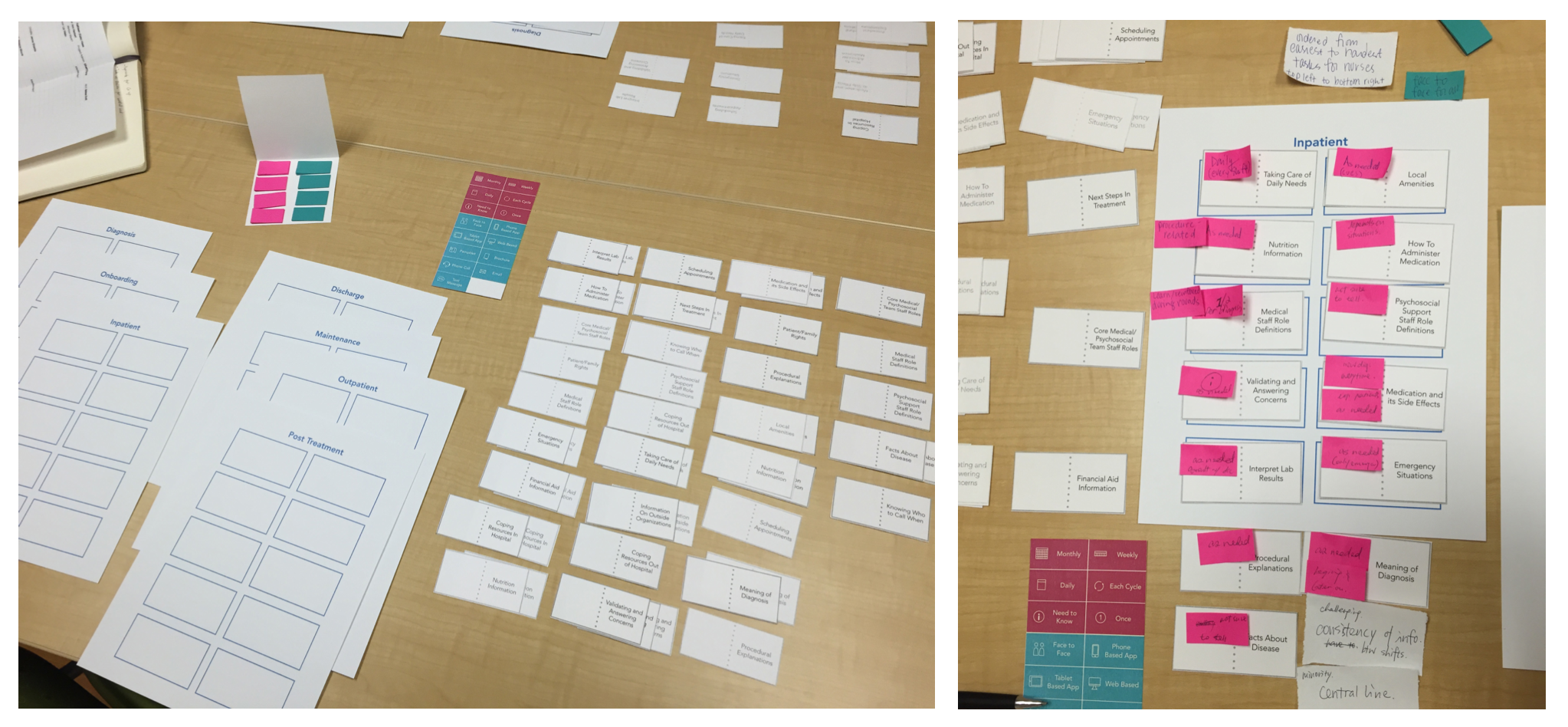What is the optimal journey in pediatric oncology for patients, family and care givers?
Research & service design, 2015
The objective
Live Well Collaborative (LWC) partnered with the Center of Blood and Disease Institute (CBDI) in Cincinnati Children’s Hospital Medical Center (CCHMC). This project was to envision an optimized CBDI patient/family experience as the model of care across CCHMC.
The solution
The team focused on prioritizing and recommending a mix of affordable, executable strategies – both for short term implementation and long term transformation – that would streamline the cancer journey for all stakeholders at CCHMC.
my role
I emerged as the lead designer after user interviews. I led the team for synthesis and brainstormed co-creation activities. During the ideation stage, the team struggled to converge on ideas. I stepped up and suggested that we consolidate the ideas into a few products and tell a story with them.
I conducted 6 staff interviews with patient/family and staff, transcribed and coded interviews, ideated design solutions, build up the storyboard and made assets for the video.
The team includes two undergrad students, two faculty advisors and me.
The Approach
User research
Over the course of several weeks our team conducted interviews with 41 staff and 9 families for a collective 25 hours of recorded interviews. These interviews were analyzed and coded using a qualitative approach.
Analyzing quantitative data from interviews.
Using several sets of participatory design tools we presented aspirational benchmarks and product concepts to our stakeholders for their insight.
Prioritizing opportunity areas
As we reported the opportunity areas, we asked the client team to help us prioritize them. We used this feedback to focus our attention on meeting a reoccurring issue: the information needs of families and patients throughout the care journey.
The first co-creation
In order to dive into the specific pieces of information that need to be communicated in different stages, we did co-creation sessions with providers and patient families.
We were able to find out the information need in different stages of their cancer journey as well as the frequency in which the information were needed.
The second co-creation
As we were brainstorming ideas, we gathered some aspirational examples so we can gauge the receptiveness and feasibility from the provider’s perspective.
For example, on the “planning and information streaming“ theme, we showed a Disney band. Doctors said that it could allow patients to unlock certain areas in the hospital that will especially be helpful for young adult patients. It could also help track the waiting times so the hospital could improve experiences based on the data.
Feedback sessions with doctors.
Solutions
Our team had lots of ideas for the ideal patient journey. However, they scatter in all parts of the patient journey. This makes it difficult for us to make recommendations to the hospital.
I stepped up and suggested that we package certain key features into specific products. As we created a story line, we would be able to connect the product features with patient needs.
The image on the right side shows the work-in-progress of the final story.
I was presenting to the client team.











